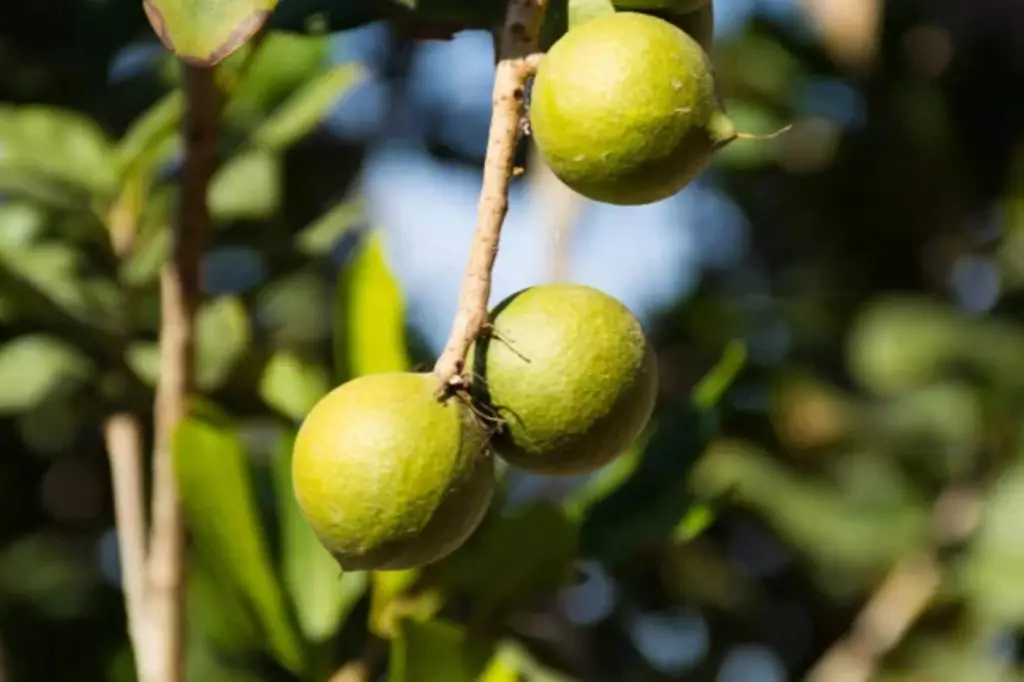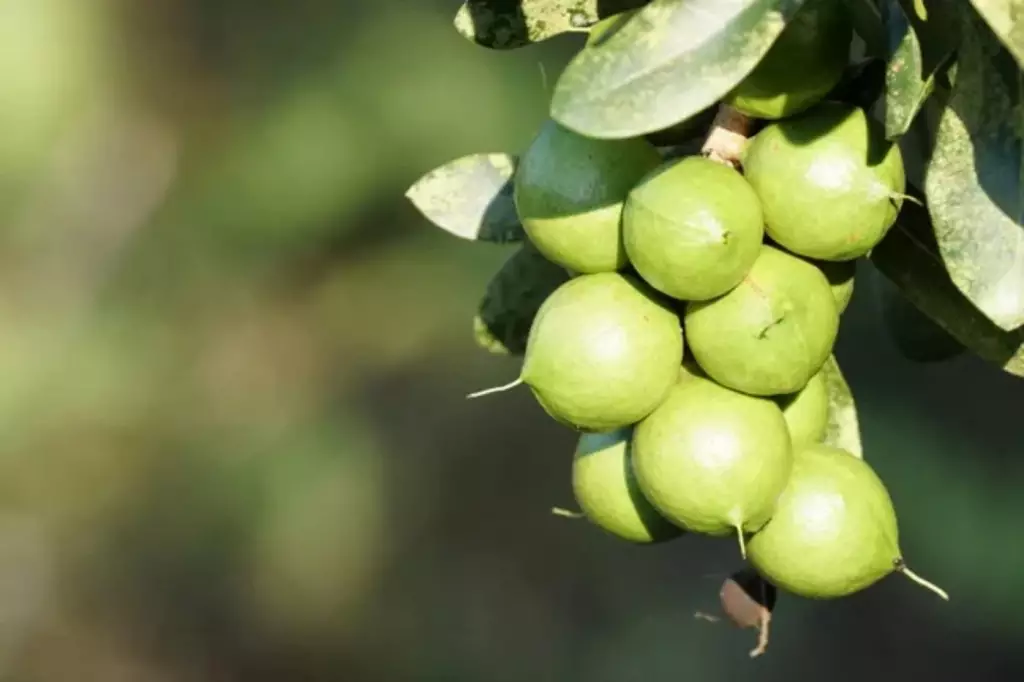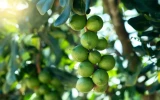Macadamia Farming Tips: 9 Practical Tips to Boost Profits
To turn your macadamia farm into a successful enterprise, you need to focus on the finer details that can significantly enhance your orchard's productivity and profitability. In this article, we'll give you 9 practical tips to boost your profit from macadamia farming.
The first tip is understanding the specifics of cultivar selection, soil health management, and optimal irrigation practices. With macadamia nut trees thriving in specific climatic conditions, you have to ensure they are planted in the right environment and cared for using best practices.
Moreover, implementing timely and efficient harvesting techniques will help minimize loss and maximize yield. Let's find out which other aspects of macadamia cultivation should you hone to secure rewarding returns and establish a sustainable source of income.
As you equip yourself with these practical tips, you can now begin your macadamia farm from scratch.
Summary
- Choose the right location with the ideal temperature range, rainfall, and soil pH, to optimize macadamia nut quality and yield, ultimately boosting profits.
- Selecting the right macadamia varieties tailored to the local climate and soil conditions can significantly impact yield and nut quality, thus enhancing profitability in the macadamia market.
- Implementing efficient cultivation practices such as proper planting and spacing, irrigation, fertilization, and pest control can lead to healthier trees and higher yields, ultimately contributing to increased profits.
- Developing a strong marketing strategy and engaging in value-added product development and strategic partnerships can unlock new revenue streams and attract a diverse customer base.

On this page:
- Learn About Macadamia Farming Basics
- Apply the Best Cultivation Practices
- Improve Harvest and Processing Techniques
- Develop a Strong Marketing Strategy
- Plan Finances and Manage the Business Well
- Expand and Add Value to Your Market
- Connect With Experts and Build Your Network
- Aim for Sustainable Growth and Expansion
- Keep Up With the Latest Farming Advancements
Learn About Macadamia Farming Basics
Before diving into the world of macadamia farming, you need to understand the optimum climate and soil conditions, as well as the importance of selecting the right varieties for your farm. These factors can significantly impact the quality of the macadamia nuts you produce.
Choose the right location
Macadamia trees will thrive in climates that offer a delicate balance of conditions. They need a temperature range of 15-30°C (59-86°F) and benefit from an annual rainfall of about 1,000-2,000 mm. However, they don’t fare well in areas with heavy frost or sustained high temperatures.

These nut trees prefer deep, well-drained soils with a pH level ideally between 5.0 and 6.5. Soil quality and health are fundamental to the robust growth of your trees. You might want to conduct thorough soil tests before planting to ensure the required nutrient levels are met and plan for regular soil health monitoring.
Choose the right macadamia varieties
Selecting the proper macadamia variety can make a significant difference in yield and quality. Look for varieties that are best suited to your region's climate and soil.
To maximize returns, focus on varieties known for their superior nut quality, as this will influence both your reputation and profitability in the macadamia market. You can check out the best macadamia varieties listed in this article.
Apply the Best Cultivation Practices
In this section, we'll shift your focus on areas such as sowing techniques, nutrient management, and effective pest control, so you can ensure healthier trees and higher yields:
Follow recommended planting and spacing guidelines
When you start sowing, remember macadamia trees require adequate space to flourish. Aim for a spacing of 15 to 20 feet between each tree, which accommodates more than a hundred macadamia trees per acre.
This allows your macadamias to get the most from the sunlight and other resources. Ensure that the seedlings have at least two full leaves and a bud before transplanting them. Handle and transport the young plants with care to avoid shock, which can impact their growth.
Implement an efficient irrigation system and a fertilization plan
Efficient irrigation and nutrient management are pillars of sustainable macadamia farming. Apply water consistently to meet the trees' needs without over-saturating the soil.
When it comes to fertilization, conduct soil tests to identify nutrient deficiencies. Balanced use of fertilizers supports healthy growth and impacts the trees' nut-bearing capabilities. Adopt sustainable practices like using organic compost to enhance soil health over time.
Regularly monitor for pests and diseases
Good pest and disease control begins with regular monitoring of your orchard. Be vigilant for signs of infestation or illness, as early detection can make all the difference.
Implement sustainable pest control methods such as introducing natural predators or using organic pesticides. Keeping your trees robust through proper cultivation and management strategies also makes them less susceptible to pests and diseases.
Improve Harvest and Processing Techniques

Plan and execute the harvest at the optimal time
To begin, harvest your macadamias from a clean orchard floor to reduce contamination. It's important to only collect mature nuts to ensure the highest quality and to sort out and destroy defective nuts immediately, as this can greatly reduce your production costs and increase overall efficiency.
Mechanization may seem costly at first, but over time it could decrease labor costs and enhance efficiency, translating to higher profitability. Here's how you can maximize your yield when harvesting macadamia nuts.
Focus on proper storage solutions and processing methods to maintain nut quality.
Drying nuts to the optimal moisture level of about 2.0% is recommended, as proper drying improves shelf life and quality.
Following this, a curing period of 1-3 weeks is beneficial before cracking the nuts. Once processed, the nuts should be stored in a cool, dry place, protecting them from moisture and pests to maintain quality.
- Drying: Aim for a ~2.0% moisture level.
- Curing: Let the nuts cure to develop the ideal flavor and texture.
- Storage conditions: Cool and dry environments are best for long-term storage.
Develop a Strong Marketing Strategy
Before diving into the nitty-gritty of macadamia farming, you need to understand the market you're entering and how to capitalize on it for sales success.
Understand the market trends and demand
You must keep your finger on the pulse of the macadamia nut market to forecast demand effectively. For instance, if market research indicates a rising demand for organic produce, consider adopting eco-friendly farming methods.
Trade shows and networking events are goldmines for gleaning insights about current consumer preferences and the popularity of various macadamia products.
It's also imperative to monitor the competition. Your competitors are not just those who grow macadamia nuts but also those who offer alternative snacks and healthy foods. This awareness will help you position your product to appeal to your target consumer and carve a niche for yourself.
Keep your marketing strategies data-driven and consumer-oriented
Strive for a blend of traditional approaches and digital marketing tactics. For example, align your sales efforts with online platforms where the nut's popularity is growing.

Social media campaigns and partnerships with influencers can be particularly effective in creating a strong reputation for your brand.
Focus on highlighting what makes your macadamia nuts stand out—whether it's the quality, flavor profile, or your sustainable farming practices. Packaging can also play a critical role; attractive, informative packaging can boost your product’s appeal in a competitive market.
Plan Finances and Manage the Business Well
Effective financial planning helps ensure sustainable profits, while adept business management enables you to identify opportunities and streamline your investment and expenses.
Create a robust business plan
Your business plan is your roadmap to success in the world of macadamia nut farming. It needs to detail every aspect of your endeavor, from your value proposition to your revenue streams. Let’s look at what to include:
- Executive summary: A clear and concise overview of your macadamia business objectives and strategies.
- Market analysis: Insight into your target market and an evaluation of how your product will fulfill customer needs.
- Operations plan: An outline of your day-to-day business operations and the necessary resources.
- Financial projections: Detailed financial forecasts to estimate revenue, profit margins, and return on investment.
- Marketing strategies: Tactics to effectively reach your customer base and expand your market share.
Remember, the clearer and more detailed your business plan, the better your chances of securing investments and maintaining a strong profit margin.
Assess investment and manage expenses
A thorough assessment of your initial investment and ongoing expenses lays the foundation for a profitable business. To manage finances effectively:
- Calculate startup costs:
- Land acquisition or rental
- Planting materials and equipment
- Licenses and insurance
- Plan operational expenses:
- Labor
- Maintenance and harvesting equipment
- Irrigation and fertilization
- Implement a financial model to track and forecast your financial health. Make adjustments based on:
- Market trends and price fluctuations
- Unexpected costs or losses
Expand and Add Value to Your Market
Focusing on value-added products and strategic partnerships can help you unlock new revenue streams and attract a diverse customer base. Here are ways on how you can do it:
Develop value-added products
Transform your raw macadamias into premium products to stand out in the market. Begin by roasting macadamias to enhance their flavor, appealing to consumers looking for ready-to-eat options.
Venture into the production of macadamia nut butter, an increasingly popular alternative to traditional butter that caters to health-conscious customers.

Your macadamias can also be pressed into macadamia oil, esteemed for its high smoke point and health benefits, ideal for both culinary and cosmetic uses.
Expand your product offerings by incorporating macadamias as key ingredients in confectioneries, bakery items, and snack mixes. These value-added products not only increase profit margins but also meet the varied preferences of consumers.
Here are some product ideas you can try:
- Macadamia nut butter
- Macadamia nut oil
- Macadamia nut milk
- Macadamia nut flour
- Macadamia nut chocolate
- Macadamia nut granola
- Macadamia nut brittle
- Macadamia nut salad dressing
- Macadamia nut cookies
- Macadamia nut energy bars
Forge partnerships and explore new segments
Building partnerships with local businesses like bakeries, restaurants, and health food stores can open doors to new market segments.
Position your macadamias as the go-to choice for businesses looking to enhance their own product offerings with high-quality ingredients. In parallel, reach out to online retailers who cater to niche audiences, helping you tap into the growing number of consumers who shop for specialty food items on the internet.
These collaborations not only diversify your supply channels but also secure new customers, eager for innovative and high-quality macadamia products.
Connect With Experts and Build Your Network
To thrive in Macadamia farming, embrace the dynamic nature of the industry by engaging with experts and attending essential gatherings by doing the following:
Leverage expert knowledge and resources
Connecting with industry experts provides invaluable insights into the increasing demand for macadamia nuts and how to tap into its health benefits to appeal to your target market.
When you harness these insights, you can identify unique opportunities that otherwise might have been overlooked. Utilize online forums, subscribe to agricultural journals, and consider consultations to boost your operation's credibility.
- Forums: Join online platforms to stay updated with industry trends.
- Journals: Regularly read leading agricultural journals for the latest research.
- Consultations: Seek advice from agricultural consultants to refine your strategy.
Attend trade shows and conferences
Trade shows and conferences are goldmines for networking and learning about what's new in the macadamia nut industry. They offer a platform to connect with vendors, buyers, and fellow farmers. You can discover new farming techniques, learn about consumer preferences, and even find new markets.
Aim for Sustainable Growth and Expansion
To ensure long-term success in macadamia farming, focusing on sustainable practices and exploring new markets is crucial. You can do so by applying the following techniques:
Enhance productivity and efficiency
Transitioning to regenerative farming methods can boost your soil health and overall farm ecosystem. By nurturing the land with organic practices, your trees can yield more macadamia nuts without depleting natural resources.
-
Utilize drip irrigation: Save water and increase irrigation efficiency by implementing drip systems that deliver water directly to the roots. It leads to less evaporation and runoff.
-
Implement crop rotation: Diversify your planting to maintain soil fertility and reduce pest pressure.
-
Conduct regular soil tests: Monitor nutrient levels and soil structure to apply tailored fertilization and amendments, thus improving productivity.
Leveraging modern agricultural technology can also streamline operations and cut costs, driving up profitability.
- Use precision agriculture tools: From soil sensors to drone technology, these can help optimize inputs like water and fertilizer, targeting exactly when and where they are needed.
Explore export opportunities and international markets
Before expansion, conduct a thorough market analysis. Understanding the strengths and weaknesses of your current operations and the market's demand will inform your strategy to penetrate international markets.

- Identify potential buyers: Research who the biggest importers of macadamia nuts are, with a particular focus on markets like South Africa, which is a leading macadamia producer poised for global trade.
- Compare market prices: Keep abreast of the international market price to ensure your nuts are competitively priced and profitable.
Keep Up With the Latest Farming Advancements
Ongoing education in this field involves keeping abreast of new technologies, cultivation methods, pest and disease management strategies, and market trends. By continually expanding your knowledge and skills, you can enhance the efficiency and productivity of your macadamia farm.
One way to prioritize ongoing education is to attend workshops, seminars, and conferences focused on macadamia farming. These events provide valuable opportunities to learn from industry experts, network with other farmers, and gain insights into innovative practices and technologies.
Additionally, agricultural extension services and research institutions often offer training programs and resources to help farmers stay updated on the latest developments in the industry.
Collaborating with agricultural experts and researchers can also be beneficial. Establishing relationships with agronomists, horticulturists, and agricultural scientists can provide access to valuable insights and research findings, enabling you to implement the most effective and sustainable farming techniques.



